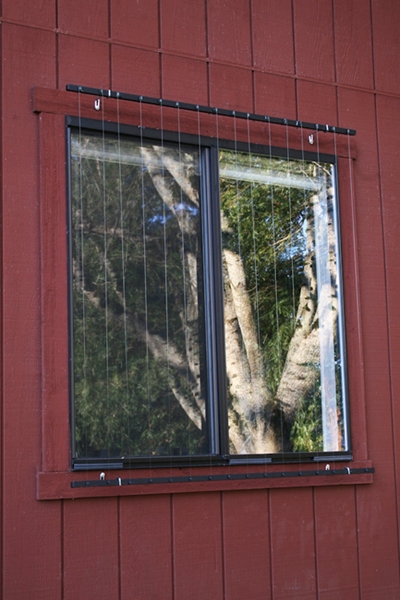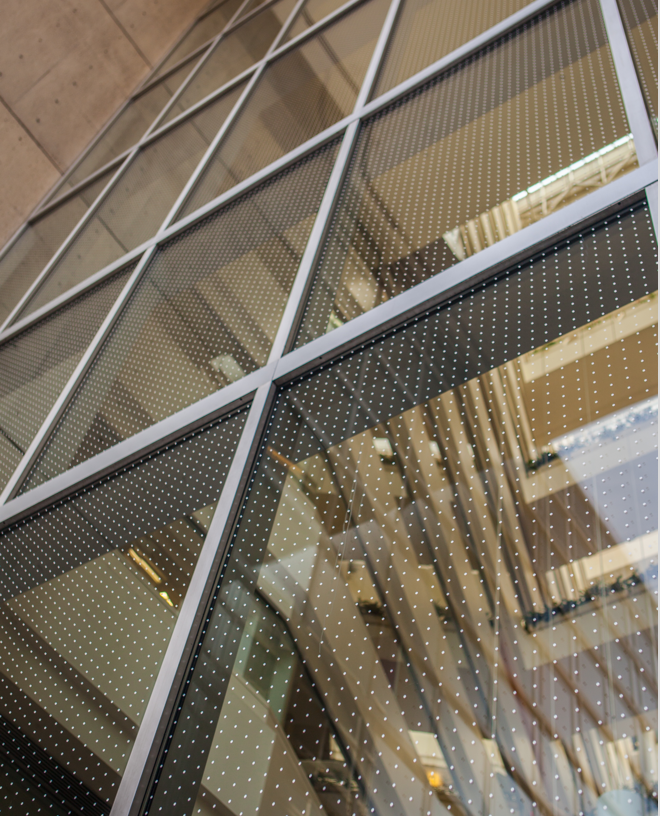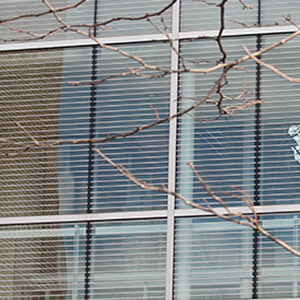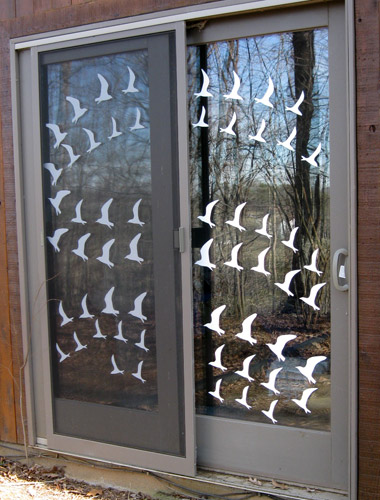An estimated 16 to 42 million birds die from window collisions every year in Canada alone, which is one of the leading causes of declining bird populations (Machtans et al., 2013). Bird- window collisions have been found to affect at least 868 species worldwide and 225 species in North America (Klem, 2006, 2015). Researchers have found that the percentage of glass coverage, the reflectivity of the glass, the proximity and the height of nearby vegetation, and internal and external lighting all have an impact on collision rates (Evans Ogden, 2002; Hager et al., 2008; Gelb and Delacretaz, 2009; Klem et al., 2009; Borden et al., 2010; Hager et al., 2013; Loss et al., 2014; Parkins et al., 2015).
Locating all birds that collide with windows can be difficult, obscuring the true impact window collisions have on bird populations (Bayne et al., 2012; Kummer et al., 2016). Members of the community can help fill in the gaps by reporting sightings of bird-window collisions, including sightings of birds striking the window, feathers and dust impact marks on windows (figure 1), and dead birds laying near buildings. These reports from the community are called Citizen Science reports.

Citizen Science reports
The results collected from Citizen Science (CS) reports were submitted from the Vancouver Island University (VIU) community including, staff, professors, and students. During the collection period of June 2018 to February 2019 a total of 25 bird-window collisions were reported, while 17 collisions were reported during the September 2017 to February 2018 survey period through CS reports. The following table is a summary of the species collected, from student surveys and CS reports, and identified during both collection periods.
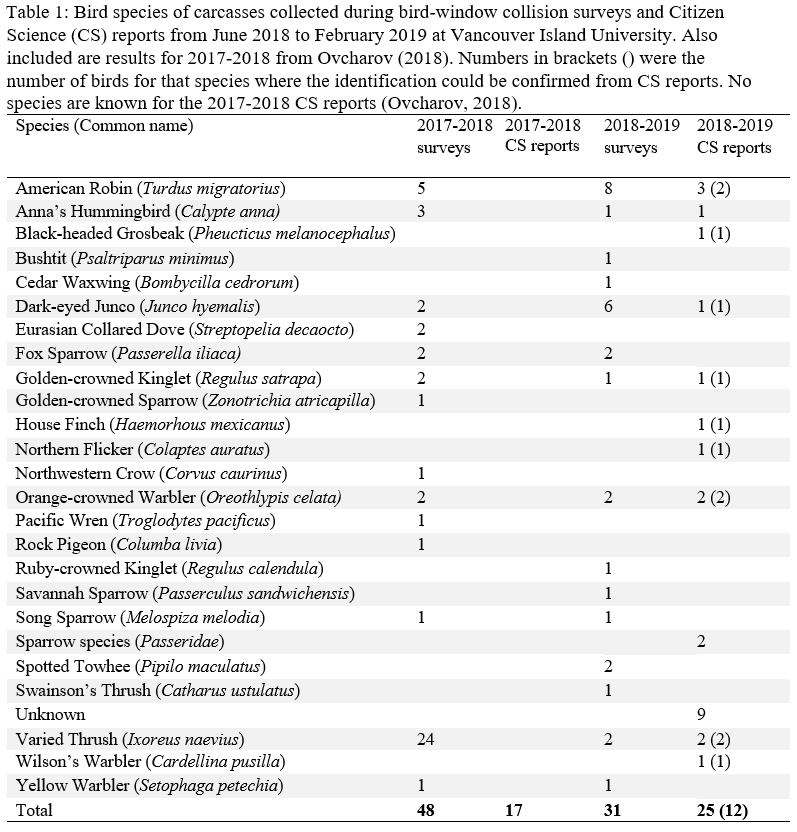
These numbers are considered to be a conservative estimate since low detection of bird-window collisions is commonly due to birds camouflaging into the surrounding area, or birds being removed by scavengers completely (Klem, 2006; Borden et al., 2010; Klem and Saenger, 2013), or some birds fly away only to die later from brain hemorrhaging (Klem, 1990a,b; Klem et al., 2004; Veltri and Klem, 2005; Borden et al., 2010; Parkins et al., 2015). The VIU community reported bird collisions from all parts of the campus, here is a graph displaying the number of collisions reported at each specific building.
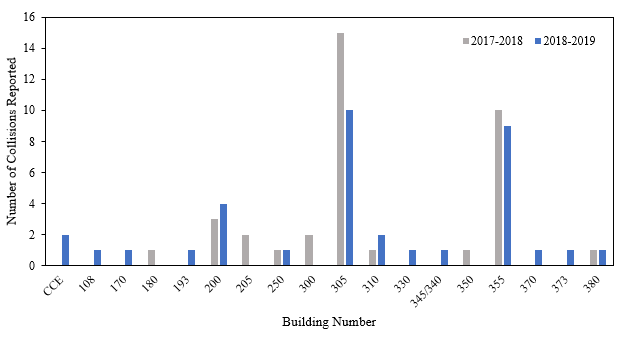
Most collisions reported involved bird carcasses (figure 3) found near the buildings figured and recorded above (figure 2). Otherwise, the VIU community reported birds striking the windows and then flying off. Although CS reports include carcasses and bird-window collision sightings at any building on campus (figure 2), the study surveys only included buildings 170, 193, 200, 205, 305, 310, 355 and 356 (figure 4).
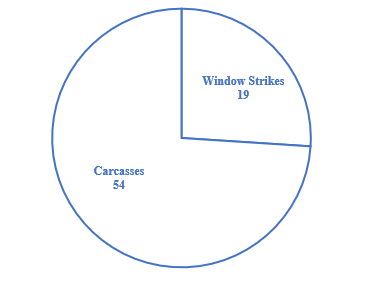
Survey findings and solutions moving forward
A total of 167 evidences of window strikes were recorded between September 2017 and February 2018, while a total of 271 evidences were recorded between June 2018 and February 2019 at the eight buildings surveyed at VIU, shown in figure 4.
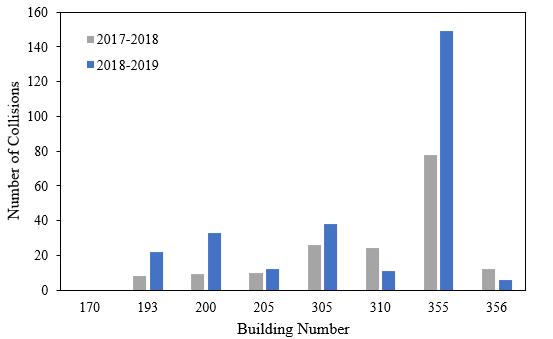
During both survey periods building 355 (Arts and Sciences) had the most bird-window collisions detected (figure 4, 5), accounting for 227 out of the 438 total collisions found. This building is highly reflective and near wooded areas (figure 9), all factors thought to increase the likelihood of increase collision events.
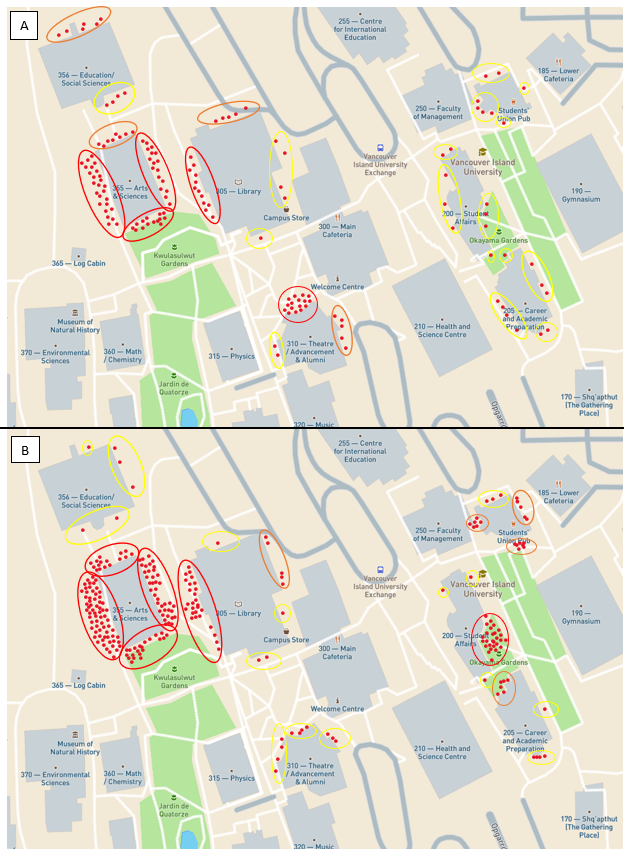
I determined a conservative estimate of approximately 405 bird-window collisions occur every year at the eight buildings surveyed, by averaging the results from the 2017-2018 and 2018-2019 surveys and using the fall collision numbers to also represent the spring collisions since fall and spring time collision rates have been found to be similar (Klem, 1989; Hager et al., 2008). According to research previously conducted, window collision death rates can range from 23-90% of collisions (Klem et al., 2004; Gelb and Delacretaz, 2006), meaning that 93- 364 birds could be dying from campus window collisions annually at these buildings (figure 6). Applying a cost-effective prevention method to building 355 alone could save approximately 200 birds annually from bird-window collisions.
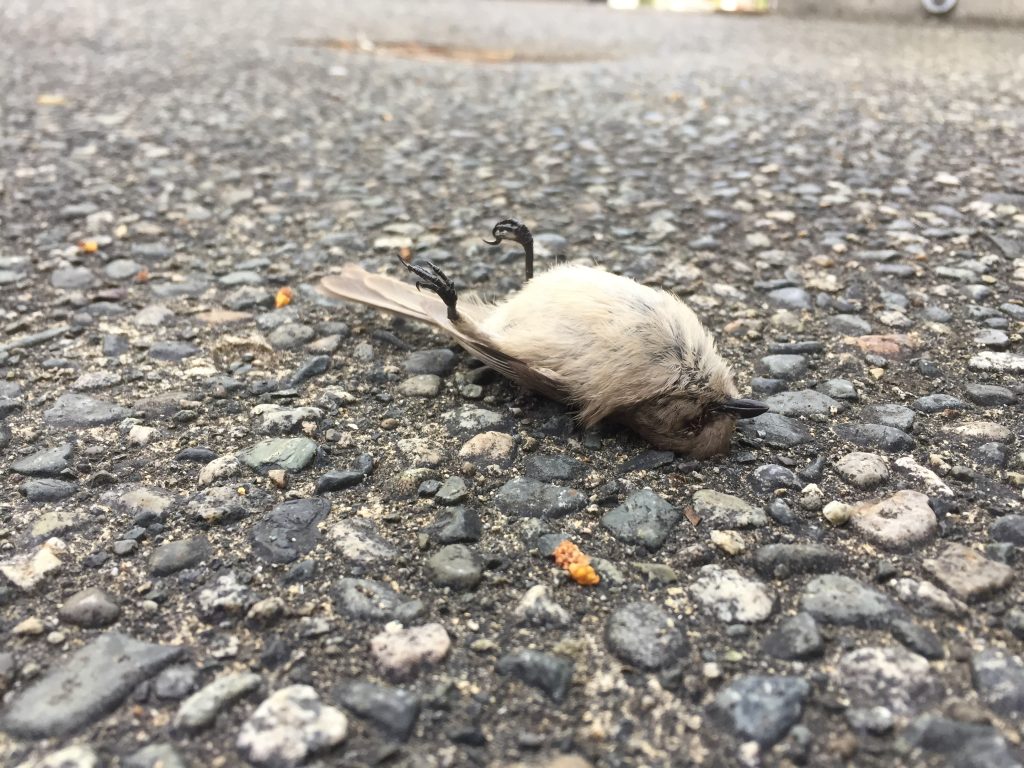
(A) 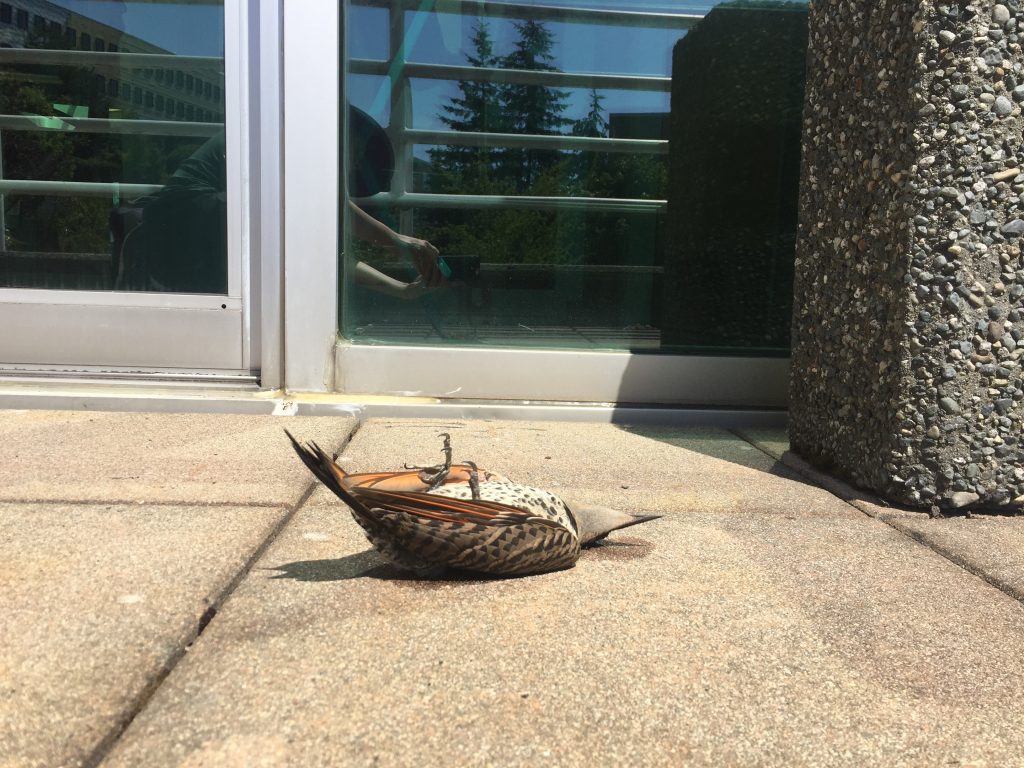
(B) 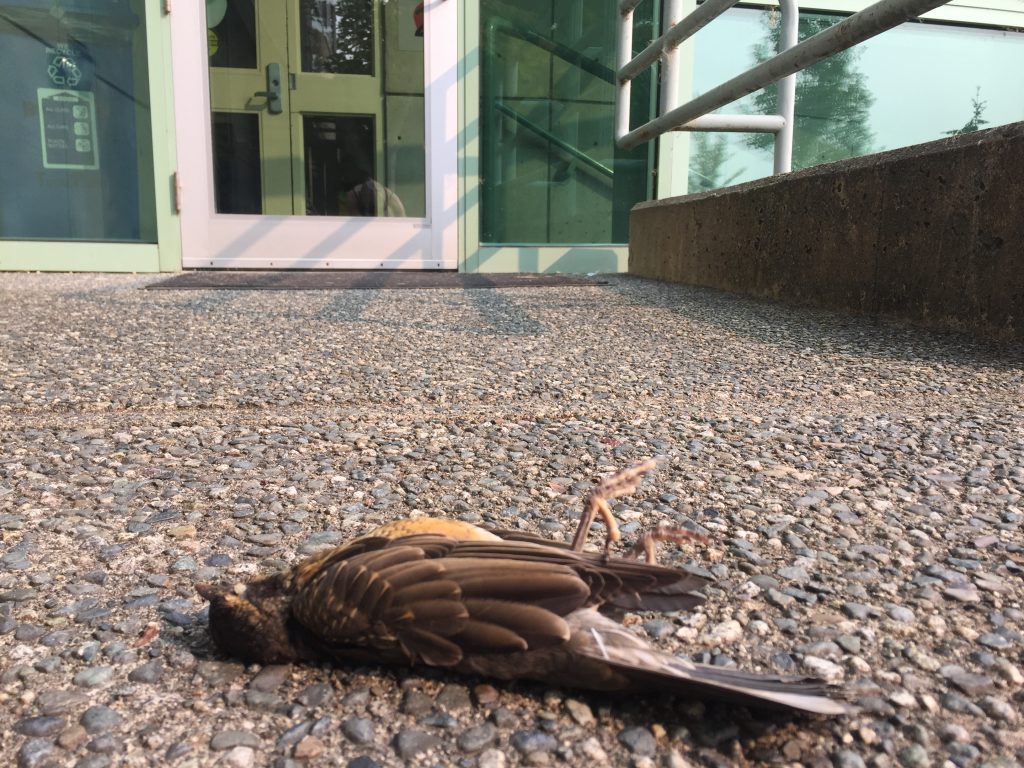
(C) 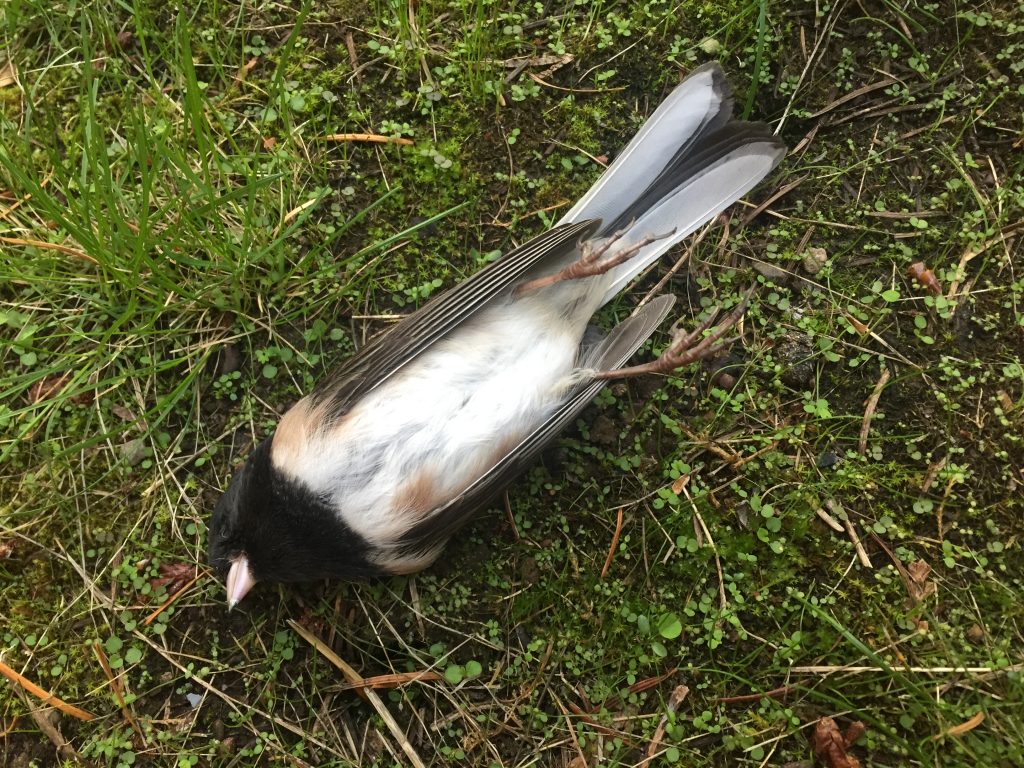
(D)
One of the cost-effective solutions to reducing the number of collisions is applying weather proof paint to the windows in decorative designs, which is being adopted at other institutions (figure 7). This solution is relatively inexpensive and involves community members and media, creating awareness surrounding the pervasiveness of BWC events.
Birds are believed to strike glass because they are trying to get to the image they see reflected. Drawing patterns or images on the window surface breaks up the reflective image on the building which allows birds to perceive the glass and avoid it. Using deterrents like a single falcon silhouette, owl decoy, wind chimes, or blinking lights have been found to be ineffective at preventing bird-window collisions (Klem, 1990b). Simple things like tape, string, or dots (figure 8) can be effectively used to prevent collisions by placing them on windows in vertical stripes separated by 10 cm or less, or horizontal stripes separated by 5 cm (Klem, 1990b).
Other studies have also found that using ultraviolet (UV) signals or markings on windows can be effective in preventing bird-window collisions as long as they reflect a minimum of 20-40% from the 300-400 nm range (Klem and Saenger, 2013). From the human perspective using UV markings would be the most aesthetic since we can not see them, however some studies have found that not all bird species can detect these UV markings since their vision is violet sensitive rather than UV sensitive (Hastad and Odeen, 2014).
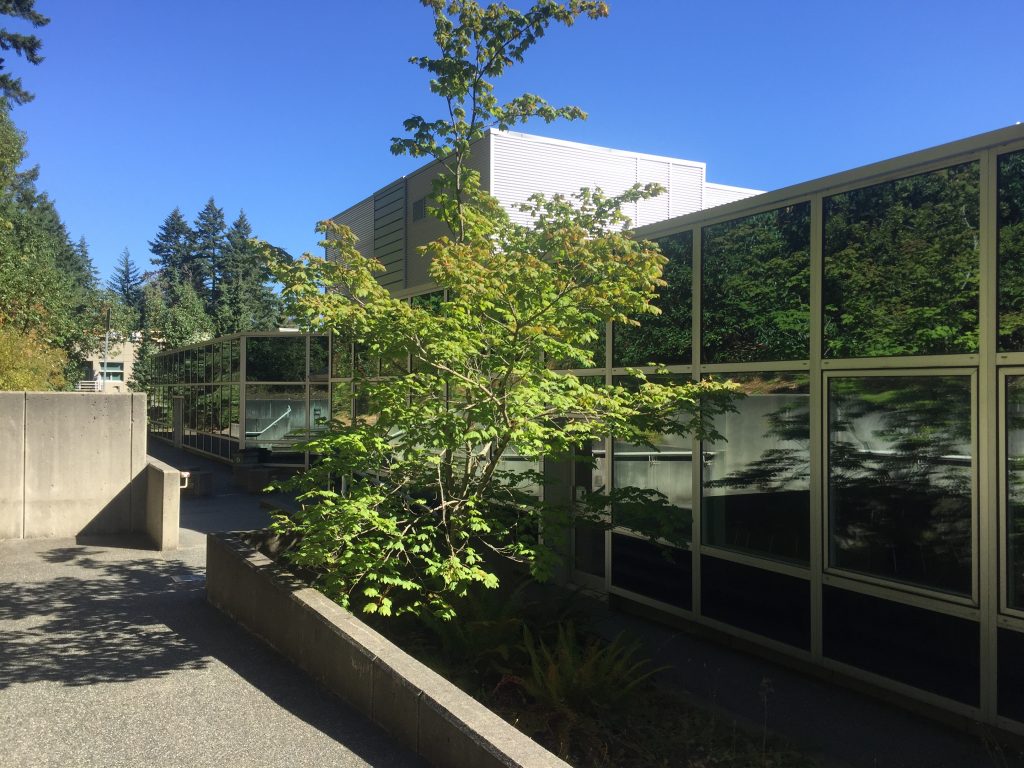
Buildings like the Arts and Science building (figure 9) with highly reflective windows and vegetation surrounding it, creates the illusion of more habitat for the birds to forage or take refuge in. Annual surveys of the VIU Nanaimo campus demonstrate a clear conservation concern. Simple mitigation tactics such as decorating the windows of this building can protect our local birds.
Once a preventative measure is in place, another survey period should be conducted to confirm that this change has made a positive impact. Building 355 being the main source of bird collisions observed, is an ideal test site especially considering the majority of the glass on the building is not functioning as a window meaning visibility would not be reduced.
Click here to see the survey summary poster made by Kaitlin Ovcharov (2017-2018)
Click here to see the survey summary poster made by Caitlynn Bright (2018-2019)
Both posters are posted and can be found at the web page VIU Bird Banding Projects run by Dr. Eric Demers.
References
Bayne, E.M., C.A. Scobie, and M. Rawson-Clark. 2012. Factors influencing the annual risk
of bird-window collisions at residential structures in Alberta, Canada. Wildlife Research
39: 583-592.
Borden, W.C., O.M. Lockhart, A.w. Jones, and M.S. Lyons. 2012. Seasonal, taxonomic, and
local habitat components of bird-window collisions on an urban university campus in
Cleveland, OH. Ohio Journal of Science 110: 44-52.
Evans Ogden, L.J. 2002. Summary report on the bird friendly building program: effect
of light reduction on collision of migratory birds. Fatal Light Awareness Program,
Tornoto, ON, Canada.
Gelb, Y., and N. Delacretaz. 2006. Avian window strike mortality at an urban office building.
The Kingbird 56: 190-198.
Gelb, Y., and N. Delacretaz. 2009. Windows and vegetation: primary factors in Manhattan
bird collisions. Northeastern Naturalist 16: 455-470.
Hager, S.B., H. Trudell, K.J. McKay, S.M. Crandall, and L. Mayer. 2008. Bird density and
mortality at windows. The Wilson Journal of Ornithology 120: 550-564.
Hager, S.B., B.J. Cosentino, K.J. McKay, C. Monson, W. Zuurdeeg, and B.Blevins. 2013
Window area and development drive spatial variation in bird-window collisions in an
urban landscape. PloS ONE 8: e53371.
Hastad, O. and A. Odeen. 2014. A vision physiological estimation of ultraviolet window
marking visibility to birds. PeerJ 2:e621.
Klem, D., Jr. 1989. Bird-window collision. Wilson Bulletin 101: 606-620.
Klem, D., Jr. 1990a. Bird injuries, cause of death, and recuperation from collisions with
windows. Journal of Field of Ornithology 61: 115-119.
Klem, D., Jr. 1990b. Collisions between birds and windows: mortality and prevention.
Journal of Field of Ornithology 61: 120-128.
Klem, D., Jr. 2006. Glass: a deadly conservation issue for birds. Bird Observer 34: 73-81.
Klem, D., Jr. 2015. Bird-window collisions: a critical animal welfare and conservation
issue. Journal of Applied Animal Welfare Science 18: S11-S17.
Klem, D., Jr., D.C. Keck, K.L. Marty, A.J. Miller Ball, E.E. Niciu, and C.T. Platt. 2004.
Effects of window angling, feeder placement, and scavengers on avian mortality at plate
glass. The Wilson Bulletin 116: 69-73.
Klem, D., Jr., C.J. Farmer, N. Delacretaz, Y. Gelb, and P.G. Saenger. 2009. Architectural
and landscape risk factors associated with bird-glass collisions in an urban
environment. The Wilson Journal of Ornithology 121: 126-134.
Klem, D., Jr. and P.G. Saenger. 2013. Evaluating the effectiveness of select visual signals
to prevent bird-window collisions. The Wilson Journal of Ornithology 125: 406-411.
Kummer, J.A., E.M. Bayne, and C.S. Machtans. 2016. Comparing the results of recall
surveys and standardized searches in understanding bird-window collisions at houses.
Avian Conservation and Ecology 11: 4-11.
Loss, S.R., S.S. Loss, T. Will, and P.P Marra. 2015. Linking place-based citizen science with
large-scale conservation research: A case study of bird-building collisions and the role
of professional scientists. Biological Conservation 184: 439-445.
Machtans, C.S., C.H.R. Wedeles, and E.M. Bayne. 2013. A first estimate for Canada of the
number of birds killed by colliding with building windows. Avian Conservation and
Ecology 8: 6-21.
Ovcharov, K. 2018. Bird-window collisions at Vancouver Islan University: an assessment
of severity and contributing factors. Vancouver Island University, undergraduate
research project: 37.
Parkins, K.L., S.B. Elbin, and E. Barnes. 2015. Light, glass, and bird-building collisions in
an urban park. Northeastern Naturalist 22: 84-94.
Veltri, C.J., and D. Klem, Jr. 2005. Comparison of fatal bird injuries from collisions with
towers and windows. Journal of Field Ornithology 76: 127-133.


